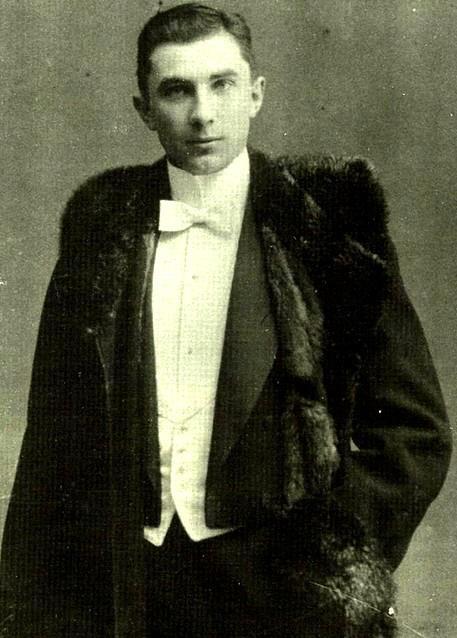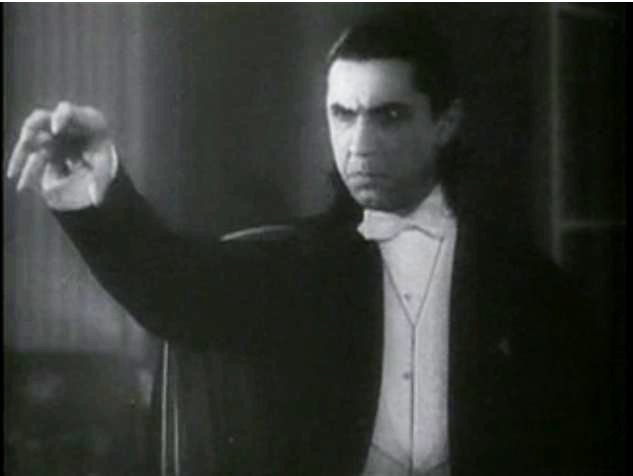|
Leoni Leo
''Leoni Leo'' (subtitled ''The Life of an Armenian Adventurer'') is a 1917 Hungarian adventure film directed by Alfréd Deésy and featuring Béla Lugosi. It is thought to be Bela Lugosi's first appearance in a motion picture (credited as "Arisztid Olt"). The Jozsef Pakots screenplay was adapted from the original novel by George Sand called ''Leone Leoni''. The original novel was set in Venice, but the film changed the setting to Brussels. The sets were designed by Sironthai Istvan. Plot Lugosi plays the noble bandit Baron Leone Leo, who leads a group of roguish gentlemen known as "the Ten". He tricks Juliette, whose father is the richest jeweler in Brussels, into thinking he is in love with her, but he is really just after her for her money. Cast * Norbert Dán * Béla Lugosi as Leoni Leo (credited as Arisztid Olt) * Annie Góth as Juliette * Lilla Bársony as Princess Zagarolo * Róbert Fiáth as Marquis Lorenzo * Lajos Gellért as Róbert (credited as Viktor Kurd) * Marel Rol ... [...More Info...] [...Related Items...] OR: [Wikipedia] [Google] [Baidu] |
Alfréd Deésy
Alfréd Deésy (22 September 1877 – 18 July 1961) was a Hungarian film director, screenwriter and actor. He directed 77 films between 1915 and 1947. Deésy also appeared as an actor in 28 films between 1913 and 1960. Biography Deésy was born Alfréd Kämpf in Dés, Austria-Hungary (now Dej, Romania); his stage name means "from Dés," much as "Lugosi" means "from Lugos." At the turn of the twentieth century, Deésy was making his name as a prominent actor on the Hungarian stage. Deésy became interested in the potential of motion pictures early, and in 1911 became co-manager of the Apollo movie theater in Debrecen. The following year, Deésy began submitting scenarios to fledgling Hungarian film concerns, and in 1913 he made his debut as screen actor. His directorial career began with ''Csak semmi botrányt!'' (1915), produced by Star-film, a Hungarian film company over which Deésy ultimately took control and operated until 1919, when the Hungarian film industry was nat ... [...More Info...] [...Related Items...] OR: [Wikipedia] [Google] [Baidu] |
George Sand
Amantine Lucile Aurore Dupin de Francueil (; 1 July 1804 – 8 June 1876), best known by her pen name George Sand (), was a French novelist, memoirist and journalist. One of the most popular writers in Europe in her lifetime, being more renowned than both Victor Hugo and Honoré de Balzac in England in the 1830s and 1840s, Sand is recognised as one of the most notable writers of the European Romantic era, with more than 70 novels to her credit and 50 volumes of various works including novels, tales, plays and political texts. Like her great-grandmother, Louise Dupin, whom she admired, George Sand stood up for women, advocated passion, castigated marriage and fought against the prejudices of a conservative society. Personal life Childhood Amantine Aurore Lucile Dupin, the future George Sand, was born on 1 July 1804 in Paris on Meslay Street to Maurice Dupin de Francueil and Sophie-Victoire Delaborde. She was the paternal great-granddaughter of the Marshal of Fr ... [...More Info...] [...Related Items...] OR: [Wikipedia] [Google] [Baidu] |
Béla Lugosi
Béla Ferenc Dezső Blaskó (; October 20, 1882 – August 16, 1956), known professionally as Bela Lugosi (; ), was a Hungarian and American actor best remembered for portraying Count Dracula in the 1931 horror classic Dracula (1931 English-language film), ''Dracula'', Ygor in ''Son of Frankenstein'' (1939) and his roles in many other horror films from 1931 through 1956. Lugosi began acting on the Hungarian stage in 1902. After playing in 172 different productions in his native Hungary, Lugosi moved on to appearing in Hungarian silent films in 1917. He had to suddenly emigrate to Germany after Hungarian Soviet Republic, the failed Hungarian Communist Revolution of 1919 because of his former socialist activities (organizing a stage actors' union), leaving his first wife in the process. He acted in several films in Weimar Germany, before arriving in New Orleans as a seaman on a merchant ship, then making his way north to New York City and Ellis Island. In 1927, he starred as Coun ... [...More Info...] [...Related Items...] OR: [Wikipedia] [Google] [Baidu] |
Silent Film
A silent film is a film with no synchronized recorded sound (or more generally, no audible dialogue). Though silent films convey narrative and emotion visually, various plot elements (such as a setting or era) or key lines of dialogue may, when necessary, be conveyed by the use of title cards. The term "silent film" is something of a misnomer, as these films were almost always accompanied by live sounds. During the silent era that existed from the mid-1890s to the late 1920s, a pianist, theater organist—or even, in large cities, a small orchestra—would often play music to accompany the films. Pianists and organists would play either from sheet music, or improvisation. Sometimes a person would even narrate the inter-title cards for the audience. Though at the time the technology to synchronize sound with the film did not exist, music was seen as an essential part of the viewing experience. "Silent film" is typically used as a historical term to describe an era of cinema pri ... [...More Info...] [...Related Items...] OR: [Wikipedia] [Google] [Baidu] |
Adventure Film
An adventure film is a form of adventure fiction, and is a genre of film. Subgenres of adventure films include swashbuckler films, pirate films, and survival films. Adventure films may also be combined with other film genres such as action, animation, comedy, drama, fantasy, science fiction, family, horror, or war. Overview Setting plays an important role in an adventure film, sometimes itself acting as a character in the narrative. They are typically set in far away lands, such as lost continents or other exotic locations. They may also be set in a period background and may include adapted stories of historical or fictional adventure heroes within the historical context. Such struggles and situations that confront the main characters include things like battles, piracy, rebellion, and the creation of empires and kingdoms. A common theme of adventure films is of characters leaving their home or place of comfort and going to fulfill a goal, embarking on travels, quests, tre ... [...More Info...] [...Related Items...] OR: [Wikipedia] [Google] [Baidu] |
Béla Lugosi Filmography
Bela Lugosi (1882–1956), best known for the original screen portrayal of Bram Stoker's Count Dracula, Dracula in 1931, was in many movies during the course of his 39-year film career. He appeared in films made in his native Hungary, Germany and New York before re-locating to Hollywood in 1928. Films are listed in order of release. (see Bela Lugosi for his biography.) 1910s This is a list of confirmed film roles Lugosi has performed in. Some films from other filmography sources have not been included here such as Star Film's ''Casanova (1918 film), Casanova'' (1918), ''Lulu (1918 film), Lulu'' (1918) and ''Lili (1917 film), Lili'' (1917), all of which had announced that Lugosi would appear in them, but Lugosi was apparently dropped from the cast before production began. 1920s 1930s 1940s 1950s Television/ Radio *''Intimate Interviews'' (1932) interviewed on radio by Dorothy West *''Hollywood on Parade No. A-8'' (1933) a 10-minute comedy skit/ short subject with Bonnie ... [...More Info...] [...Related Items...] OR: [Wikipedia] [Google] [Baidu] |
1917 Films
1917 in film was a particularly fruitful year for the art form, and is often cited as one of the years in the decade which contributed to the medium the most, along with 1913. Secondarily the year saw a limited global embrace of narrative film-making and featured innovative techniques such as continuity cutting. Primarily, the year is an American landmark, as 1917 is the first year where the narrative and visual style is typified as "Classical Hollywood". __TOC__ Events *January – ''Panthea'' is released, the first film from the company that Joseph Schenck formed with his wife, Norma Talmadge, after leaving Loew's Consolidated Enterprises. *February – Buster Keaton first meets Roscoe "Fatty" Arbuckle in New York and is hired as a co-star and gag man. *April 9 – Supreme Court of the United States rule in Motion Picture Patents Co. v. Universal Film Manufacturing Co. which ends the Motion Picture Patents Company appeal and results in the end of the company. *April 23 � ... [...More Info...] [...Related Items...] OR: [Wikipedia] [Google] [Baidu] |
1917 Adventure Films
Events Below, the events of World War I have the "WWI" prefix. January * January 9 – WWI – Battle of Rafa: The last substantial Ottoman Army garrison on the Sinai Peninsula is captured by the Egyptian Expeditionary Force's Desert Column. * January 10 – Imperial Trans-Antarctic Expedition: Seven survivors of the Ross Sea party were rescued after being stranded for several months. * January 11 – Unknown saboteurs set off the Kingsland Explosion at Kingsland (modern-day Lyndhurst, New Jersey), one of the events leading to United States involvement in WWI. * January 16 – The Virgin Islands, Danish West Indies is sold to the United States for $25 million. * January 22 – WWI: United States President Woodrow Wilson calls for "peace without victory" in Germany. * January 25 ** WWI: British armed merchantman is sunk by mines off Lough Swilly (Ireland), with the loss of 354 of the 475 aboard. ** An anti-prostitution drive in Prostitution in t ... [...More Info...] [...Related Items...] OR: [Wikipedia] [Google] [Baidu] |





